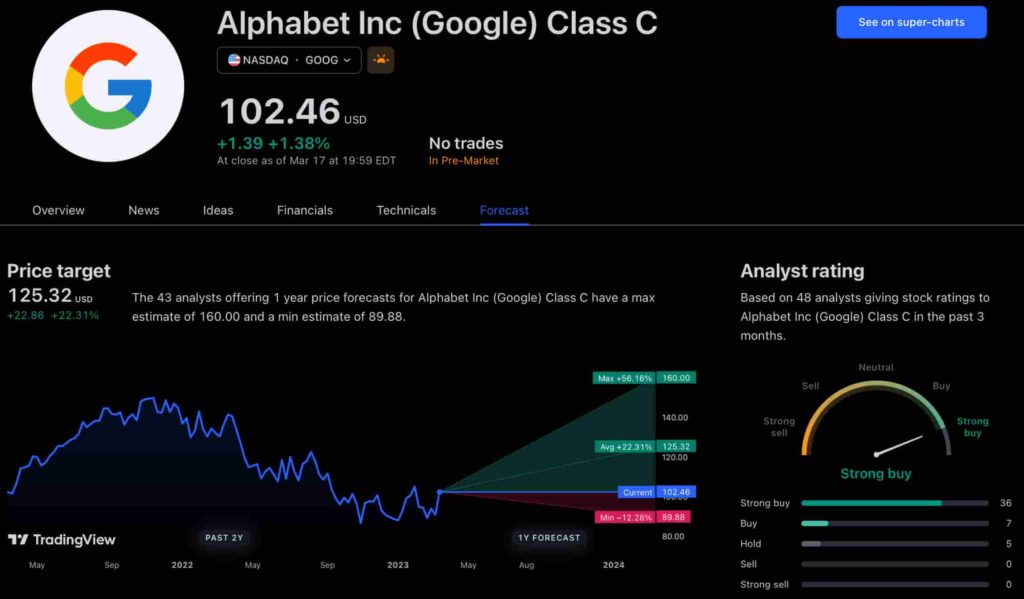The new app is called watchGPT and as I tipped off already, it gives you access to ChatGPT from your Apple Watch. Now the $10,000 question (or more accurately the $3.99 question, as that is the one-time cost of the app) is why having ChatGPT on your wrist is remotely necessary, so let’s dive into what exactly the app can do.
NEWS
How Often Will Core Web Vitals Ranking Factor Be Calculated? via @sejournal, @martinibuster
In a Google SEO office-hours hangout someone asked John Mueller about the update schedule for the ranking factor associated with the Core Web Vitals (CWV) scores. Will the ranking factor be updated in real-time or every 28 days?
The answer could be important because publishers who make changes to improve their Core Web Vitals (CWV) scores may be anxious to see the positive results of their changes, regardless of how small the ranking factor itself is.
This is the question asked:
“This page experience algorithm which is coming in May… just wanted to know if it will be a real-time algorithm or something like core updates where it will be updated from time to time?”
Advertisement
Continue Reading Below
Usually when John Mueller is asked a tricky question he pauses to think about it. But with this question he answered right away without hesitation.


Mueller:
Advertisement
Continue Reading Below
“I don’t know… I don’t know if that’s uh… decided completely yet.
I mean… part of that is also that there is just a general lag for the data anyway.
…We kind of have to wait that period of time until we have collected enough data.”
Mueller was making a reference to the Chrome User Experience data (CrUX) that is collected by Chrome users who have opted into participate in providing page speed and web vitals information to Google.
The core web vitals data is collected and updated every 28 days. That means the scores reported in Google Search Console or in tools like PageSpeed Insights are reports of what Google measured in (roughly) the previous 28 days.
That’s what Mueller was referencing when he said there was a “general lag for the data.”
Mueller continued his answer:
“So I suspect it’s not something that will be optimized for… speedy updates but more kind of to have a clear understanding of the overall picture.
…my guess is it’ll be more something of a slow thing rather than a real-time change.”
Does CWV Ranking Update Schedule Matter?
Some algorithm related factors are applied in real-time, like links. The Penguin algorithm has been described by Google to be a real-time algorithm.
Other factors like a widescale change to website content can take up to a few months to impact rankings depending on how many pages have changed.
Advertisement
Continue Reading Below
With regard to how often the Core Web Vitals ranking factor will be updated, John Mueller admitted that he didn’t know how often the Core Web Vitals ranking factors will be applied.
It’s apparently something that’s not been discussed with him and frankly it’s probably not something people are wondering about… until now.
Some may believe that knowing how often the CWV ranking signal is updated is important because ranking factors can impact rankings.
When a site publisher updates their site there follows a waiting period for feedback that will indicate how the changes impact ranking (if at all).
Advertisement
Continue Reading Below
His answer was more of an educated guess and a very reasonable one.
Would a more accurate and definitive answer matter?
Citation
Watch the video, beginning at about the 50 second spot: [embedded content]
Facebook Faces Yet Another Outage: Platform Encounters Technical Issues Again

Uppdated: It seems that today’s issues with Facebook haven’t affected as many users as the last time. A smaller group of people appears to be impacted this time around, which is a relief compared to the larger incident before. Nevertheless, it’s still frustrating for those affected, and hopefully, the issues will be resolved soon by the Facebook team.
Facebook had another problem today (March 20, 2024). According to Downdetector, a website that shows when other websites are not working, many people had trouble using Facebook.
This isn’t the first time Facebook has had issues. Just a little while ago, there was another problem that stopped people from using the site. Today, when people tried to use Facebook, it didn’t work like it should. People couldn’t see their friends’ posts, and sometimes the website wouldn’t even load.
Downdetector, which watches out for problems on websites, showed that lots of people were having trouble with Facebook. People from all over the world said they couldn’t use the site, and they were not happy about it.
When websites like Facebook have problems, it affects a lot of people. It’s not just about not being able to see posts or chat with friends. It can also impact businesses that use Facebook to reach customers.
Since Facebook owns Messenger and Instagram, the problems with Facebook also meant that people had trouble using these apps. It made the situation even more frustrating for many users, who rely on these apps to stay connected with others.
During this recent problem, one thing is obvious: the internet is always changing, and even big websites like Facebook can have problems. While people wait for Facebook to fix the issue, it shows us how easily things online can go wrong. It’s a good reminder that we should have backup plans for staying connected online, just in case something like this happens again.
NEWS
We asked ChatGPT what will be Google (GOOG) stock price for 2030

Investors who have invested in Alphabet Inc. (NASDAQ: GOOG) stock have reaped significant benefits from the company’s robust financial performance over the last five years. Google’s dominance in the online advertising market has been a key driver of the company’s consistent revenue growth and impressive profit margins.
In addition, Google has expanded its operations into related fields such as cloud computing and artificial intelligence. These areas show great promise as future growth drivers, making them increasingly attractive to investors. Notably, Alphabet’s stock price has been rising due to investor interest in the company’s recent initiatives in the fast-developing field of artificial intelligence (AI), adding generative AI features to Gmail and Google Docs.
However, when it comes to predicting the future pricing of a corporation like Google, there are many factors to consider. With this in mind, Finbold turned to the artificial intelligence tool ChatGPT to suggest a likely pricing range for GOOG stock by 2030. Although the tool was unable to give a definitive price range, it did note the following:
“Over the long term, Google has a track record of strong financial performance and has shown an ability to adapt to changing market conditions. As such, it’s reasonable to expect that Google’s stock price may continue to appreciate over time.”
GOOG stock price prediction
While attempting to estimate the price range of future transactions, it is essential to consider a variety of measures in addition to the AI chat tool, which includes deep learning algorithms and stock market experts.
Finbold collected forecasts provided by CoinPriceForecast, a finance prediction tool that utilizes machine self-learning technology, to anticipate Google stock price by the end of 2030 to compare with ChatGPT’s projection.
According to the most recent long-term estimate, which Finbold obtained on March 20, the price of Google will rise beyond $200 in 2030 and touch $247 by the end of the year, which would indicate a 141% gain from today to the end of the year.
Google has been assigned a recommendation of ‘strong buy’ by the majority of analysts working on Wall Street for a more near-term time frame. Significantly, 36 analysts of the 48 have recommended a “strong buy,” while seven people have advocated a “buy.” The remaining five analysts had given a ‘hold’ rating.

The average price projection for Alphabet stock over the last three months has been $125.32; this objective represents a 22.31% upside from its current price. It’s interesting to note that the maximum price forecast for the next year is $160, representing a gain of 56.16% from the stock’s current price of $102.46.
While the outlook for Google stock may be positive, it’s important to keep in mind that some potential challenges and risks could impact its performance, including competition from ChatGPT itself, which could affect Google’s price.
Disclaimer: The content on this site should not be considered investment advice. Investing is speculative. When investing, your capital is at risk.
NEWS
This Apple Watch app brings ChatGPT to your wrist — here’s why you want it

ChatGPT feels like it is everywhere at the moment; the AI-powered tool is rapidly starting to feel like internet connected home devices where you are left wondering if your flower pot really needed Bluetooth. However, after hearing about a new Apple Watch app that brings ChatGPT to your favorite wrist computer, I’m actually convinced this one is worth checking out.
-

 PPC5 days ago
PPC5 days ago19 Best SEO Tools in 2024 (For Every Use Case)
-
SEARCHENGINES7 days ago
Daily Search Forum Recap: April 17, 2024
-

 SEO7 days ago
SEO7 days agoAn In-Depth Guide And Best Practices For Mobile SEO
-
SEARCHENGINES6 days ago
Daily Search Forum Recap: April 18, 2024
-
SEARCHENGINES5 days ago
Daily Search Forum Recap: April 19, 2024
-

 MARKETING6 days ago
MARKETING6 days agoEcommerce evolution: Blurring the lines between B2B and B2C
-

 SEO6 days ago
SEO6 days ago2024 WordPress Vulnerability Report Shows Errors Sites Keep Making
-

 WORDPRESS5 days ago
WORDPRESS5 days agoHow to Make $5000 of Passive Income Every Month in WordPress














